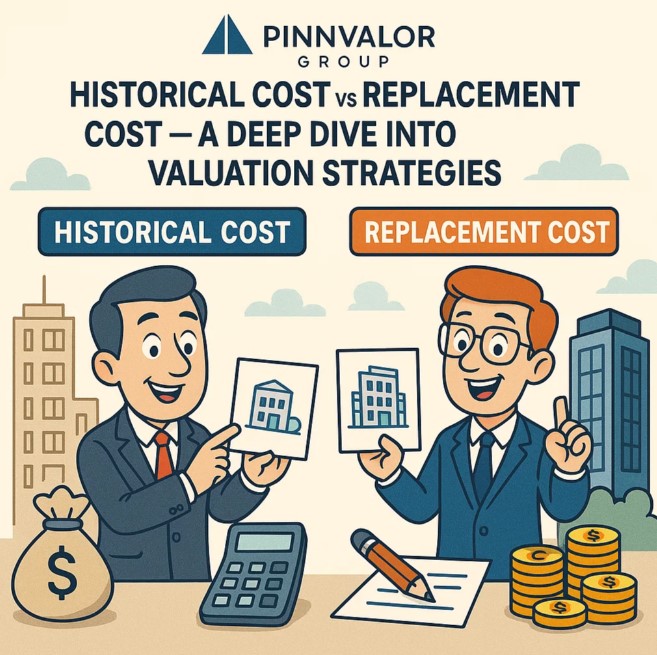
Historical Cost vs Replacement Cost – A Deep Dive into Valuation Strategies
In the realm of accounting and finance, determining the value of an asset is crucial for fair reporting, decision-making, and investment analysis. Two widely used valuation bases are Historical Cost and Replacement Cost. While both have their significance, they represent different philosophies of valuation.
Is your balance sheet stuck in the past when it should reflect today’s reality?
Historical cost keeps you grounded in facts, but replacement cost keeps you prepared for the future. Real valuation lies in balancing both, not choosing one blindly.
What is Historical Cost?
Historical cost refers to the original purchase price of an asset. It is the amount actually paid during acquisition, including expenses necessary to bring the asset to a usable state.
Features:- Objective and verifiable
- Based on actual transaction
- Stays constant in financial records
- Easily audited
- Simple and reliable
- Prevents manipulation
- Accepted by most accounting standards
- Doesn't reflect current market conditions
- Can understate assets during inflation
- Not useful for dynamic decision-making
What is Replacement Cost?
Replacement cost is the amount it would cost to replace an existing asset with a similar new one at current market prices. This valuation method focuses on current value rather than historical expenditure.
Features:- Reflects present market realities
- Useful for insurance, capital budgeting, and internal decisions
- Can fluctuate with market prices
- More relevant for planning and pricing
- Shows realistic asset value
- Better during inflationary periods
- Subjective and involves estimation
- May not be accepted for official reporting
- Harder to verify

Key Differences at a Glance
Here is a simple comparison between the two valuation methods:
- Basis: Historical Cost – Original price | Replacement Cost – Current cost
- Objectivity: Historical Cost – Highly objective | Replacement Cost – More subjective
- Inflation Impact: Historical – Ignored | Replacement – Considered
- Reporting Use: Historical – GAAP/IFRS compliant | Replacement – Internal use
- Relevance: Historical – Less relevant over time | Replacement – More relevant currently
Practical Implications
Accounting & Financial Reporting:- Financial statements usually rely on historical cost.
- Provides stability and comparability for users.
- Replacement cost is preferred for planning, budgeting, and insurance decisions.
- Investors might consider replacement cost for real valuation.
- Historical costs may become outdated.
- Replacement cost reflects current economic reality better.
Example to Illustrate
Suppose a company purchased machinery in 2018 for ₹10,00,000. In 2025, the cost to purchase a similar machine is ₹16,00,000 due to inflation.
Historical Cost on books: ₹10,00,000 (minus depreciation)
Replacement Cost currently: ₹16,00,000
For financial reporting, machinery is shown at its historical (depreciated) cost. But for insurance and decision-making, replacement cost is more relevant.
Conclusion – Which One is Better?
Both valuation methods serve different purposes:
Historical cost is reliable and used for external reporting.
Replacement cost offers relevance and real-time insights for internal decisions.
A balanced approach often works best!
Final Note
In a changing economic environment, it is important for finance professionals to look beyond historical figures. Replacement cost helps businesses stay realistic and future-ready, while historical cost maintains consistency and comparability.
